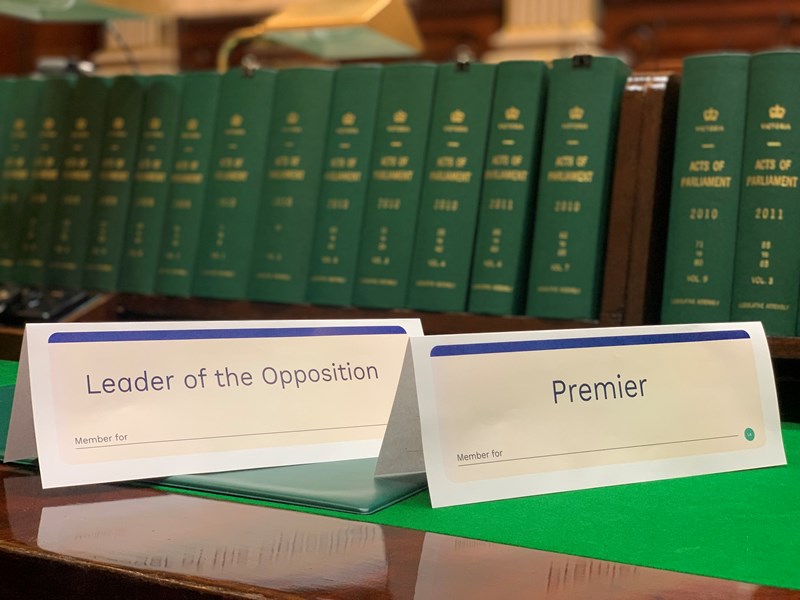Debating in the chamber

Run a mock debate on any issue or topic using the processes of parliament, with the How to write a bill template and Chamber place cards.
The How to write a bill template and Chamber place cards can be used to develop mock parliamentary debates on any topic.
How to write a bill
The How to write a bill template outlines for students some key questions to consider when writing a bill, including who the proposed law applies to, how it will be implemented, and if there are any penalties for not adhering to the law. There are also some prompt questions for students to consider different party positions.
Example bill
During debates, members of parliament do not ask and answer questions, rather they debate bills that include how, when and under what circumstances a potential law would apply. Members of parliament may also debate the specific clauses within a bill (this happens in an optional stage after the second reading debates).
Below is an example of how a question may be turned into a bill.
Question: Should Australia Ban Mullets?
Would become
Bill title: Hair Regulation (Ban the Mullet) Bill 2024
Bill clauses:
- Only celebrities can sport ‘fashionable’ mullets
- Hairstyles be regulated where the difference in length between the sides and back is no more than 5cm
- Penalties will be applied to hairdressers found to be providing mullets, $500 fine for first offence, $1000 fine for second offence, jail for third offence
- Individuals sporting a mullet must have a hair cut by an approved hairdresser
Students then discuss and debate the practicality and implementation of each point. For example, what makes a ‘celebrity?’ What is fashionable? Can any one sport ‘unfashionable’ mullets? During this process students may vote to amend different aspects of the bill. The majority of students (50% + 1) must agree to vote to change the clause and 50% + 1 must agree to pass the bill once the amendments are made.
Chamber place cards
The Chamber place cards cover some of the key roles for MPs across both of the chambers. Role cards for some parliamentary officers, such as the clerks, Serjeant-at-Arms, Usher of the Black Rod and Hansard reporters, have been included to help differentiate students’ participation in debate. On the front of the place card, students have an opportunity to fill in their ministerial roles (if applicable) and their electorate. The MPs role in the chamber, standing orders (chamber rules) and key phrases for debate are listed on the back on the place cards.
The Chamber place cards resource also has a script that outlines the key moments during a passage of a bill that can be used by the Presiding Officer, minister introducing the bill and at least one other member of parliament.